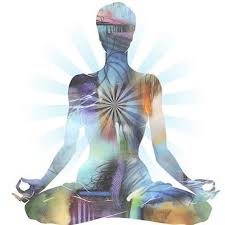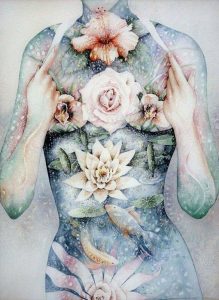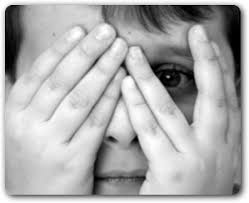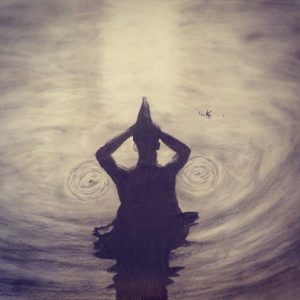 We had the second meeting of our Introduction to Meditation and Mindfulness series at Yoga Bliss today. The course content is adapted from the wonderful work of Insight Meditation teacher, Gil Fronsdal. Last week we focused on mindfulness of breathing. We use the breath to stabilize and center ourselves. We pay attention to how we pay attention. We learn to distinguish fully experiencing breathing from thinking about breathing or anything else. This week we open the lens of our attention to include the present moment experience of embodiment. Many of the best qualities of human being come through the experience of being embodied: intelligence, understanding, love, and compassion.
We had the second meeting of our Introduction to Meditation and Mindfulness series at Yoga Bliss today. The course content is adapted from the wonderful work of Insight Meditation teacher, Gil Fronsdal. Last week we focused on mindfulness of breathing. We use the breath to stabilize and center ourselves. We pay attention to how we pay attention. We learn to distinguish fully experiencing breathing from thinking about breathing or anything else. This week we open the lens of our attention to include the present moment experience of embodiment. Many of the best qualities of human being come through the experience of being embodied: intelligence, understanding, love, and compassion.
Embodiment & Meaning Making Stories
We use the breath to stabilize and center ourselves. We aim to feel our body breathing, naturally without technique. Only feeling breathing and our body’s experience expressed as sensation. Awareness of the body. Beyond awareness of the body, we experience emotions; beyond emotions we experience thought; beyond thought we experience mind. At the center of this constellation of aliveness is our breathing. When the center is full, it provides us stability. We can move outward, experience sensations, emotions and thoughts, while remaining grounded. We begin, again and again, by using the breath to stabilize and center ourselves.
 Today we focus on the body and the experience of physical embodiment. The body is always present. If we are connected to the body we are in the present moment. In mindfulness meditation, the very simple practice of noticing, we bring our attention to our living experience. If we are present with our breathing we are taking in the sensations of that experience in a deeper, fuller way. Like being on the beach on a nice sunny day. Imagine you’re on the edge of the ocean, standing there and taking in the breeze, the smell of the ocean, the sight. You really register the experience; you take it in. In the same way, you sit with your breath and take in the fullness of the experience of breathing in.
Today we focus on the body and the experience of physical embodiment. The body is always present. If we are connected to the body we are in the present moment. In mindfulness meditation, the very simple practice of noticing, we bring our attention to our living experience. If we are present with our breathing we are taking in the sensations of that experience in a deeper, fuller way. Like being on the beach on a nice sunny day. Imagine you’re on the edge of the ocean, standing there and taking in the breeze, the smell of the ocean, the sight. You really register the experience; you take it in. In the same way, you sit with your breath and take in the fullness of the experience of breathing in.





